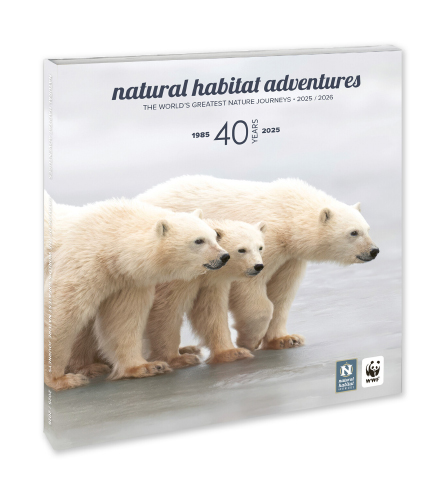Itinerary
Arrive in Auckland, New Zealand's largest city, and transfer to your hotel. Auckland is surrounded by 48 volcanoes and numerous picturesque islands, and its seaside location has earned it the nickname "City of Sails" because of the many yachts that frequent its harbors and the adjoining Hauraki Gulf. Meet your guide in the hotel lobby for a welcome dinner this evening.
Day 2: Tiritiri Matangi Island
Take a scenic 80-minute ferry ride from Auckland this morning through the Hauraki Gulf to reach Tiritiri Matangi, an island sanctuary that is an inspiring conservation project. Free of invasive pests, this habitat allows native and endangered species to flourish among a regenerating forest. Birdlife is especially impressive, and we may see korimako (bellbird), tieke (also called North Island saddleback, for the rusty brown back patch covering its black flanks), and if we’re lucky, kokako (blue-wattled crow), and the bright blue-plumed takahe, a flightless swamphen indigenous to New Zealand. Alongside a local nature specialist, you’ll learn to spot these species and more as you learn about the island’s ongoing transformation, following walking tracks through native bush to dramatic clifftops.
Important Note: The excursion to Tiritiri Matangi Island is only offered Wednesday through Sunday since the ferry does not operate on Monday and Tuesday. Should this day of your extension fall on a Monday or Tuesday, a whale and dolphin marine safari will be substituted instead. Departing from downtown Auckland, this half-day trip with marine scientists explores the Hauraki Gulf Marine Park in search of the rare Bryde’s whales, orcas and dolphins that often frequent Waitemata Harbor. We might also see pygmy blue whales, New Zealand fur seals, manta rays, sharks, turtles and up to 26 species of seabirds including little blue penguins.
Day 3: Auckland / Shorebird Center / Coromandel Peninsula—Pauanui
Your guide meets you at the hotel this morning for your departure to the dramatic Coromandel Peninsula, renowned for its pristine white sand beaches, misty mountain forests and laid-back vibe. Following a scenic coastline where thousands of resident and migratory shorebirds breed and nest, stop at the world-famous Pukorokoro Miranda Shorebird Center for an introductory talk about bird ecology, habitat and conservation, and take a guided walk to the bird hides to observe them. Some of the species make astounding annual migrations, including the godwit that flies 7,000 miles from Arctic Alaska to New Zealand—the longest nonstop migration of a land bird on the planet. Viewing varies depending on season and time of day; the best bird observations come at high tide or up to two hours on either side. If you didn’t bring your own binoculars, you can rent them here.
Continue to the historic gold mining town of Thames for lunch and to explore some of the old buildings and churches dating to the town's founding in the mid-19th century. This afternoon, ascend through steep volcanic mountains clad in dense rain forest to reach the east side of the Coromandel Peninsula. Dependent on tides and weather, visit the unique Hot Water Beach, walk to Cathedral Cove or take an easy two-hour nature walk offering a chance to learn about the local flora, fauna and natural history of the area. Peek inside a cavern left over from the gold mining era to spy glittering glowworms inside. Then it’s just a short drive to the quiet beach town of Pauanui where dinner awaits at our lodge's award-winning restaurant featuring an acclaimed Pacific Rim menu.
Day 4: Coromandel Peninsula / Rotorua / Waimangu Volcanic Valley / Te
Puna Start your morning on a scenic drive from the Coromandel Peninsula south to Rotorua, the geothermal and Maori cultural center of New Zealand. Here, a guided tour through Waimangu, the only geothermal system in the world created within the last 5,000 years, reveals a volatile landscape where naturally heated mineral water bubbles up from deep within the earth. The ecosystem we observe today was created on June 10, 1886 at 5:30 a.m., the end of the Mount Tarawera eruption that extinguished all life within its proximity. This living laboratory offers insight into how life came back, beginning with essential algae that thrive in the fissures of thermal features. Watch for aquatic birds like the papango (New Zealand scaup), weweia (New Zealand dabchick), mute swan and more. Afterward, a guided cruise across Lake Rotomahana takes us past stunning geothermal activity accessible only by boat to the vestiges of the Pink and White Terraces, reportedly the largest silica sinter deposits on earth that were almost entirely destroyed following the Tararewa eruption.
Late this afternoon, for a festive finale to your North Island adventure, enjoy an unforgettable cultural feast that infuses Maori flavors with locally sourced cuisine. Afterward, enter a carved wooden meeting house to view an exhilarating Maori cultural performance. The evening ends with a visit to the largest geyser in the southern hemisphere—Pohutu—where the Maori kuia (women elders) tell traditional stories over a cup of hot chocolate.
Day 5: Ohinemutu Maori Village—Private Walk / Mountain Jade—Private Tour / Dunedin
After breakfast, a private walk through the traditional Maori village of Ohinemutu offers insight into the culture, history and natural beauty of the area. Home to descendants of the Ngati Whakaue iwi (tribe), this living village was chosen by its original inhabitants for its abundant geothermal energy, evidenced by an abundance of steaming vents and boiling hot pools. Additional highlights include the the intricately carved Tamatekapua, or traditional Maori meeting house (viewable from outside), and the historic St. Faith’s Church that blends Tudor-style architecture with Maori artistry, including a unique window depicting Jesus in a Maori cloak.
Next, enjoy a private tour of Mountain Jade, a carving studio and shop where skilled artisans transform pounamu—New Zealand jade—into jewelry and intricate figurines. During the visit, you’ll gain insight into the cultural significance of pounamu and its traditional uses. A metamorphic rock formed deep within the Earth’s crust over 200-300 million years ago, pounamu is celebrated for its durability, beauty, and spiritual and cultural importance in Maori traditions. Unlike other nations that mine for jade, New Zealand harvests the stone through prospecting in riverbeds and glacial valleys. In the late 1990s, the New Zealand government officially entrusted the ownership and guardianship of all pounamu to the South Island iwi Ngai Tahu. During our tour, you’ll have the unique opportunity to try traditional Maori carving techniques and create your own piece of pounamu jewelry. Choose your stone, string it and take home a meaningful keepsake.
After lunch, transfer to the airport for a flight to Dunedin in anticipation of the start of your New Zealand Nature Explorer tour. You’ll be met upon arrival at the airport and transferred to your hotel.
Please note that beginning in September 2025, guests will fly to Dunedin the afternoon of Day 5 for an overnight in advance of the beginning of the New Zealand Nature Explorer. The next morning, enjoy a complimentary breakfast and spend the morning exploring Dunedin, with lunch on your own. In the afternoon, you'll be transferred to Larnach Castle to meet your Expedition Leader and additional travel companions for an introductory overview and the official start of the main tour.
























